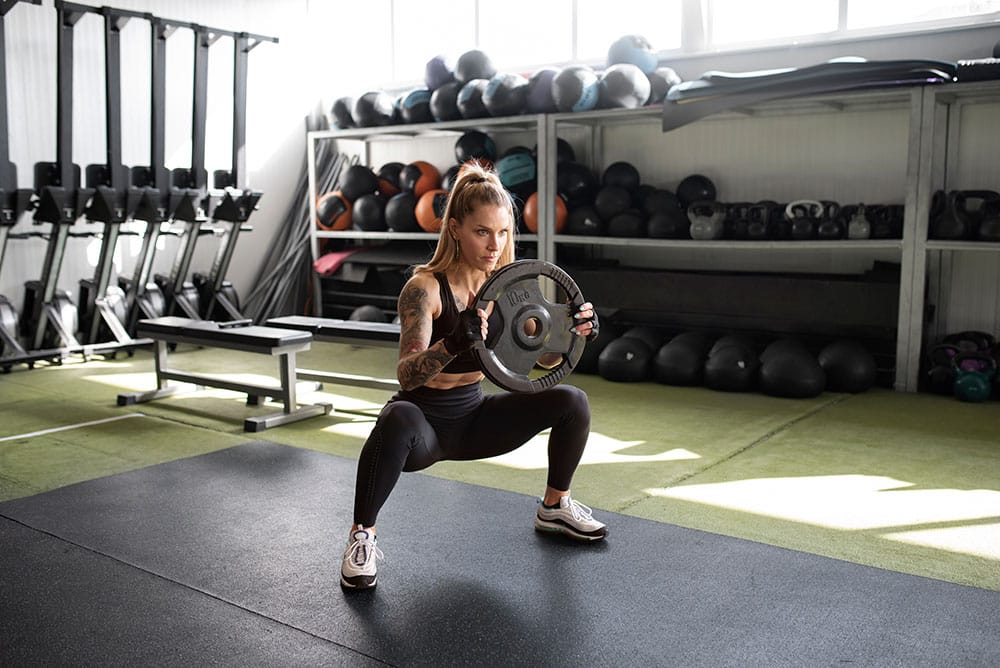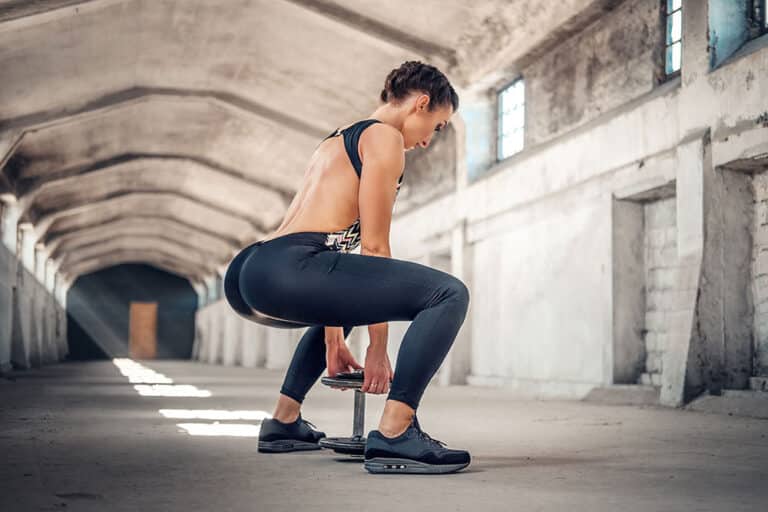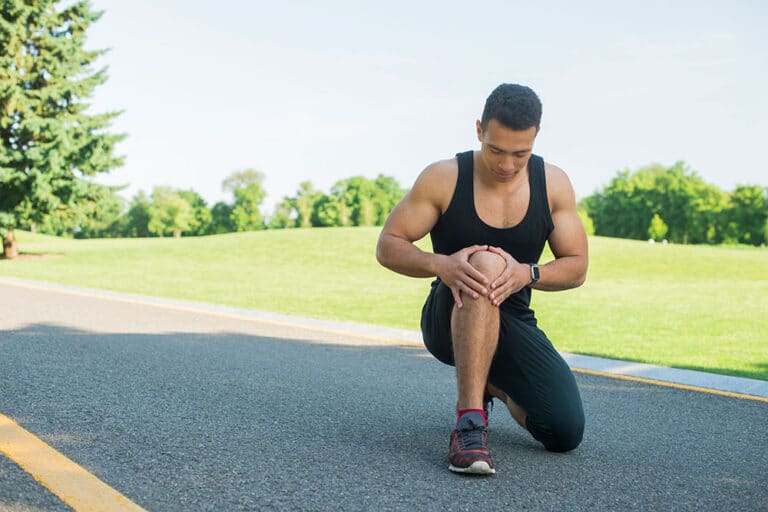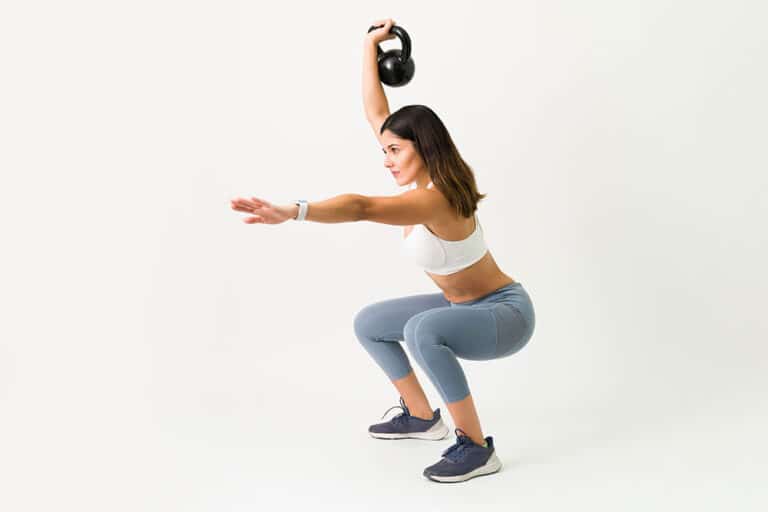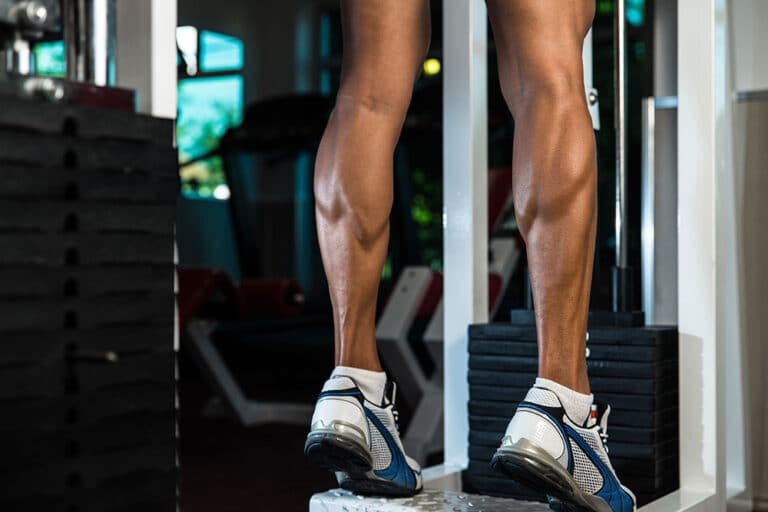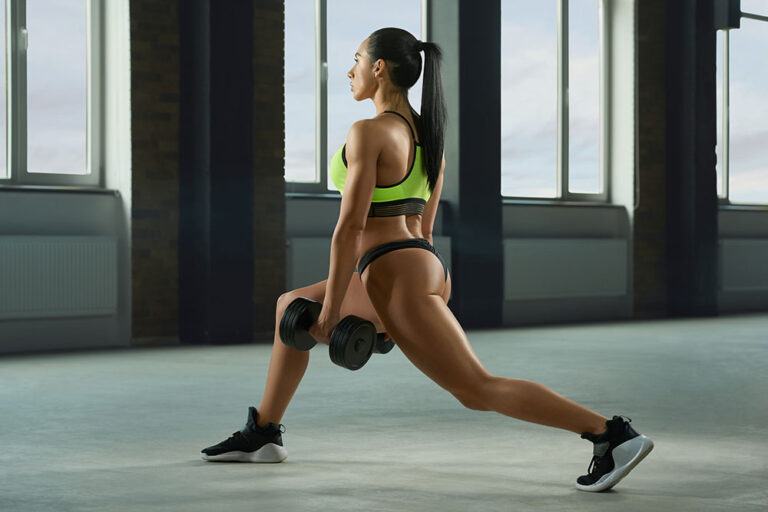Importance of Leg Exercises
Leg exercises form the cornerstone of a balanced fitness routine. Incorporating them ensures not only the development of lower body strength but also overall physical well-being.
Benefits of Leg Workouts
Leg workouts offer a multitude of benefits that extend beyond mere muscle development.
- Enhanced Muscle Tone and Performance: Regular leg exercises prevent muscle degradation and maintain muscle tone. This leads to improved performance and balanced body development.
- Boosted Stability and Mobility: By engaging major muscle groups, leg workouts enhance stability, mobility, and coordination. This is crucial for overall body function.
- Athletic Performance and Injury Prevention: Leg exercises significantly improve athletic performance. They also play a key role in preventing injuries by strengthening muscles and joints.
- Chronic Condition Management: Regular leg workouts can help manage and prevent chronic conditions like arthritis, heart disease, and diabetes.
- Hormonal Benefits: Leg exercises stimulate the release of essential hormones such as cortisol, testosterone, and human growth hormone. These hormones aid in stress response, muscle repair, growth, immunity, and fat metabolism (Healthline).
Role in Fitness Routine
Integrating leg exercises into a fitness routine is essential for numerous reasons.
- Balanced Body Fitness: Incorporating leg workouts ensures a strong and stable foundation. It prevents the imbalance that may occur from focusing solely on upper body exercises.
- Strength, Speed, and Balance: Leg workouts build crucial elements like strength, speed, and balance, which are important for overall fitness and daily activities.
- Goal Achievement and Adaptation: Consistently working out the legs helps in easier adaptation to various fitness levels and goals. It also supports habit formation, making it easier to stick to fitness routines (Healthline).
For more on how to integrate leg exercises into your routine, check out our guides on how to do bodyweight squats and quick leg workout no equipment. For those looking to challenge themselves further, try our bodyweight leg challenge or learn how to do pistol squats.
| Benefit | Impact |
|---|---|
| Enhanced Muscle Tone | Prevents muscle degradation, maintains tone |
| Stability and Mobility | Improves balance, range of motion |
| Athletic Performance | Boosts performance, prevents injuries |
| Chronic Condition Management | Manages arthritis, heart disease, diabetes |
| Hormonal Benefits | Aids muscle repair, growth, fat metabolism |
Types of Leg Exercises
Leg exercises are a crucial component of any balanced fitness routine. Incorporating various types of leg exercises can enhance strength, stamina, and overall health. This section will explore bodyweight leg movements, unilateral leg exercises, and leg workouts focusing on specific muscle groups.
Bodyweight Leg Movements
Bodyweight leg exercises are excellent for anyone looking to improve lower body strength without the need for equipment. These exercises can be highly effective for maintaining muscle tone, enhancing mobility, and reducing injury risk.
- Squats: This fundamental movement targets the quadriceps, hamstrings, glutes, and calves. Check out our guide on [how to do bodyweight squats].
- Lunges: A versatile exercise that works all the major muscle groups in your legs. Explore various lunge techniques in our [bodyweight lunge variations].
- Calf Raises: Essential for strengthening your calves and improving balance. Learn more about [calf exercises without weights].
Unilateral Leg Exercises
Unilateral leg exercises are performed one leg at a time, helping to correct muscular imbalances and enhancing stability. These exercises engage your core muscles, promoting better coordination and preventing injuries.
- Single-Leg Squats (Pistol Squats): An advanced exercise that significantly challenges balance and leg strength. Learn [how to do pistol squats].
- Step-Ups: A great way to target your hamstrings and glutes while improving balance.
- Curtsy Lunges: Targets the glute medius and minimus, contributing to hip stability.
Benefits of incorporating unilateral exercises:
- Corrects muscular imbalances
- Engages core muscles for better balance
- Stimulates rehabilitation indirectly (Healthline)
Leg Workouts for Muscle Groups
Focusing on specific muscle groups in your leg workouts can lead to balanced development and improved performance. Here are some exercises targeting different parts of your legs:
| Muscle Group | Exercise | Repetitions |
|---|---|---|
| Quadriceps | Bodyweight Squats | 3 sets of 15 |
| Hamstrings | Single-Leg Deadlifts | 3 sets of 12 |
| Glutes | Single-Leg Hip Thrusts | 3 sets of 15 |
| Calves | Calf Raises (Various Stances) | 3 sets of 20 |
| Total Lower Body | Plyometric Box Jumps | 3 sets of 10 |
For more workout ideas:
- Explore our [quick leg workout no equipment]
- Learn about different [plyometric exercises for legs]
Leg exercises not only enhance your physical appearance but also contribute to better overall health, stability, and mobility. Understanding and integrating different types of exercises can help you tailor a more effective and engaging lower body workout routine.
Building Strength with Leg Workouts
Strengthening your legs without weights is possible with the right exercises and routine. Understanding how to structure sets and reps is key to maximizing your workout effectiveness.
Beginners’ Sets and Reps
For beginners, starting with manageable sets and reps is crucial. Aim for two sets of each bodyweight leg exercise, performing 8 to 10 repetitions per set. This approach helps build a foundation of strength and endurance without overloading your muscles.
| Exercise | Sets | Reps |
|---|---|---|
| Bodyweight Squats | 2 | 8-10 |
| Lunges | 2 | 8-10 |
| Calf Raises | 2 | 8-10 |
| Glute Bridges | 2 | 8-10 |
For detailed instructions on performing specific exercises like bodyweight squats and lunges, visit our internal guides.
Advanced Athletes’ Sets and Reps
Advanced athletes can handle more intensity to stimulate muscle growth and strength. They should aim for at least three sets, with each set consisting of 15 or more repetitions (Outside Online). For even greater challenges, experienced athletes might consider sets to failure.
| Exercise | Sets | Reps |
|---|---|---|
| Single-Leg Hip Thrust | 3+ | 15+ |
| Step-Ups | 3+ | 15+ |
| Calf Raise Variations | 3+ | 15+ |
| Curtsy Lunges | 3+ | 15+ |
For advanced athletes, focusing on exercises that engage different muscle groups can lead to balanced lower-body strength. Explore our bodyweight leg challenge for intensive workouts.
Muscle Hypertrophy with Bodyweight Exercises
Achieving muscle hypertrophy using bodyweight exercises requires strategic planning. Since there is no external resistance, increasing the volume (more reps) and intensity (higher set counts) is essential. Beginners should start with the basic structure of two sets of 8 to 10 reps, progressing to higher counts as their fitness improves.
For advanced hypertrophy goals, completing sets to failure or surpassing 15 reps per set is effective. Special moves like the single-leg hip thrust, which targets the glutes more efficiently than squats (Outside Online), can enhance muscle size and strength.
Incorporating variations and intensifying exercises will contribute to muscle hypertrophy. For inspiration, check out our guides on how to build leg muscle without weights and plyometric exercises for legs.
By tailoring your leg workout to your fitness level, you can achieve significant strength and hypertrophy using only bodyweight exercises, ensuring you maintain strong, resilient legs.
Effective Leg Exercises
Engaging in effective leg exercises is key for building strength, stamina, and overall health. Here are some excellent leg exercises that can be incorporated into your routine.
Single-Leg Hip Thrust
The single-leg hip thrust focuses on your glutes and is highly effective in building muscle strength. A 2019 study published in The Journal of Strength and Conditioning Research found that this exercise may be more effective than squats. By isolating each leg, it ensures balanced muscle development and enhances core stability.
How to perform:
- Sit on the ground with your upper back resting against a bench.
- Extend one leg out while keeping the other foot flat on the ground.
- Drive your hips upward, squeezing your glutes at the top.
- Lower back down and repeat for the desired number of reps before switching legs.
For more detailed instructions, visit our guide on how to do pistol squats.
Step-Ups
Step-ups are another effective lower body strengthening exercise. A 2020 study in the Journal of Sports Science & Medicine recognized them as one of the best exercises for engaging the lower body.
How to perform:
- Stand in front of a bench or sturdy elevated platform.
- Place one foot on the platform, ensuring your knee is at a 90-degree angle.
- Press down through your heel to lift your body onto the platform.
- Step back down with control and switch legs.
For more variations, check out our bodyweight leg challenge.
Calf Raises Variation
Performing calf raises off a step increases the range of motion, elongates the eccentric portion of the exercise, and builds muscle mass and strength more efficiently.
How to perform:
- Stand on the edge of a step with your heels hanging off.
- Raise your heels as high as possible, squeezing your calves at the top.
- Slowly lower your heels below the step level for a full stretch.
- Repeat for desired reps.
Visit our calf exercises without weights for more variations.
Curtsy Lunges
Curtsy lunges target multiple muscles including the gluteus medius, adductors, inner thighs, and hip rotators. They require balance and muscular engagement, activating the abs and lower back for stability.
How to perform:
- Stand with your feet hip-width apart.
- Step one leg behind and across the other, bending both knees as if you’re curtsying.
- Lower your body until your front thigh is parallel to the floor.
- Return to the starting position and switch legs.
For more lunge variations, refer to our article on bodyweight lunge variations.
By incorporating these exercises into your routine, you’ll develop stronger, more toned legs. Remember to explore our site for related topics like quick leg workout no equipment and how to build leg muscle without weights.
Leg Workout Frequency
Maintaining the right frequency for leg workouts is essential for maximizing muscle strength, growth, and overall fitness. Here, we explore how often one should engage in leg exercises without weights, focusing on frequency, recovery, and the impact of leg workout routines.
Frequency for Leg Workouts
For optimal results, individuals should aim to train their legs two to three times per week. This frequency provides adequate time for muscle recovery and adaptation while ensuring progressive overload to stimulate muscle growth (Better Health Victoria). Balancing workouts prevents excessive stress on the same muscle groups on consecutive days, reducing the risk of overtraining and injury.
To build significant muscle strength and size in the legs, it’s important to vary workout routines and include exercises targeting different muscle groups. This approach helps break through plateaus, encouraging continuous muscle development. Australia’s physical activity guidelines support incorporating muscle-strengthening activities at least two days per week, covering all major muscle groups, including the legs.
Recovery After Leg Exercise
Recovery is a vital component of any fitness regimen, allowing muscles to repair, grow, and reduce the risk of injury. After a strenuous leg workout, a recovery period of at least 48 hours is recommended before targeting the same muscle group again. For seasoned athletes, a split training program can be an effective way to manage recovery while maintaining high training frequencies.
Studies indicate that increasing training frequency beyond two times per week does not necessarily yield additional strength benefits if the total workout volume remains constant (PubMed Central). Instead, spreading out workout sessions throughout the week can be advantageous in managing fatigue and perceived exertion, particularly for demanding exercises like squats.
Measuring recovery can be done through objective tests like strength and power assessments or subjective measures such as perceived exertion and recovery status. Notably, recovery times can vary based on the nature of the workout, with strength-oriented sessions requiring longer recovery compared to power-oriented sessions.
Training Frequency Impact
The impact of training frequency on muscle development and recovery has been studied extensively. Research comparing different training frequencies suggests that both twice-weekly and four-times-weekly leg workouts can yield similar strength gains, provided the total volume is consistent (PubMed Central). This implies that spreading the total workout volume across several sessions can effectively manage exertion levels, especially for leg muscles.
The recovery timeline also affects the outcome of different workout structures. For instance, strength-oriented sessions can result in greater neuromuscular impairment and prolonged recovery compared to power-oriented sessions with equivalent total work (PubMed Central). Therefore, tailoring workout routines to individual recovery rates and response to training can optimize performance and muscle growth.
For more targeted advice on leg exercises and recovery strategies, explore our articles on quick leg workouts without equipment, how to do bodyweight squats, and calf exercises without weights.
| Workout Frequency | Recommended Recovery | Training Benefits |
|---|---|---|
| 2-3 times per week | 48 hours between sessions | Muscle growth, manageable fatigue |
| 4 times per week | Split routines suggested | Effective volume management, consistent strength gains |
Understanding the right frequency and recovery strategies can significantly enhance the effectiveness of leg workouts, promoting better strength and muscle development while minimizing the risk of overtraining and injury.
Customizing Leg Workouts
Effective leg workouts can be customized to fit the specific needs and goals of health enthusiasts. For those seeking to build strength, stamina, and overall leg health, it’s important to incorporate components such as a proper warm-up and cool-down, an understanding of upper vs. lower body splits, and effective progression and recovery strategies.
Warm-Up and Cool-Down
Starting a leg workout with a thorough warm-up is vital for reducing the risk of injury and preparing the muscles for exertion. Begin with five minutes of low-intensity cardio to elevate the heart rate, followed by dynamic stretches and bodyweight exercises like squats, lunges, and calf raises (Gymshark).
| Warm-Up Step | Duration |
|---|---|
| Low-Intensity Cardio | 5 minutes |
| Dynamic Stretches | 5 minutes |
| Bodyweight Exercises | 5 minutes |
Cooling down is equally important. A proper cool down should start with five minutes of low-intensity cardio to help the body transition from workout mode. Follow this with dynamic stretches and finish with static stretches to flush out lactic acid, improve circulation, reduce muscle soreness, and enhance recovery.
Upper vs. Lower Body Split
Once sufficient experience in resistance training is gained, one might consider a split program. An effective split might include working the upper body on Mondays and Fridays, and dedicating Wednesdays and Sundays to lower body workouts.
| Day | Targeted Area |
|---|---|
| Monday | Upper Body |
| Wednesday | Lower Body |
| Friday | Upper Body |
| Sunday | Lower Body |
This split allows for adequate recovery time between workouts while providing balanced attention to both upper and lower body muscle groups.
Progression and Recovery Strategies
Progress in leg workouts typically begins with rapid strength gains due to neural adaptation, followed by hypertrophy (muscle size increase) over time. To continue progressing and overcome workout plateaus, it’s important to vary workouts and progressively increase the difficulty.
When 12 repetitions of an exercise can be completed comfortably, it’s time to progress. For beginners, aim to gradually increase to two to three sets for each exercise, with eight to 12 repetitions per set every second or third day (Better Health Victoria).
| Level | Sets | Repetitions | Frequency |
|---|---|---|---|
| Beginner | 1-2 | 8-12 | 2-3 times a week |
| Intermediate | 2-3 | 8-12 | 3-4 times a week |
Recovery is critical for progress and can be assessed using both objective measures (strength tests) and subjective measures (perceived exertion). Typically, a strength-oriented session requires longer recovery times compared to a power-oriented session of equal work.
For further details on specific exercises and how to incorporate them into your routine, check our guides on [bodyweight leg challenge] and [quick leg workout no equipment]. Additionally, explore advanced techniques such as [how to do pistol squats] and [plyometric exercises for legs] to enhance your leg workout regimen.
- About the Author
- Latest Posts
Johnnie D. Jackow Sr., the founder and CEO of Total Body Fitness, Worldwide, has a long-standing career in the fitness industry. He began as a certified personal trainer in the mid-90s and soon after authored his first weight loss book in 1998. This led to the launch of Total Body Fitness, Nationwide in the USA at the same time. Johnnie gained recognition as the fitness guru of his time, running infomercials on local TV late at night in Houston, Texas. Over the years, he has helped more than 40,000 individuals from all over the world achieve their health and fitness goals. With over 60,000 hours of documented training in integrative functional medicine, he completed his PhD in human physiology in 2010. His primary objective is to assist people in reaching their health and fitness goals through alternative approaches rather than relying solely on conventional medicine and pharmaceutical drugs. Today, with almost three decades of experience under his belt, Johnnie continues to be a leader in health and fitness.

